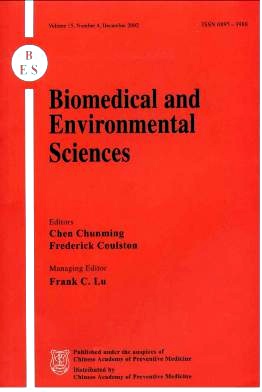Low Cholesterol in Erythrocyte Membranes and High Lipoperoxides in Erythrocytes Are the Potential Risk Factors for Cerebral Hemorrhagic Stroke in Human
-
Key words:
- cerebral hemorrhage /
- correlation analysis /
- plasma and erythrocytes /
- superoxide dismutase /
- risk factors /
- vitamin E
Abstract: Objective To explore the association of risk for human cerebral hemorrhage with blood cholesterol, free radicals, oxidatation and lipoperoxidation. Methods 351 cerebral hemorrhage patients (CHP) in the acute phase and 100 healthy adult volunteers (HAV) were investigated by testing the contents of cholesterol (CH), lipoperoxides (LPO), nitric oxide (NO), vitamin C (VC) and vitamin E (VE) and activities of superoxide dismutase (SOD) in plasma and erythrocytes (RBC), and by assessing the contents of CH and LPO in RBC with spectrophotometric assays. Results Compared with the average values (AV) of the above biochemical parameters (BP) in the HAV group, the AV of CH in plasma and RBC, VC and VE in plasma as well as SOD in plasma and RBC in the CHP group were significantly decreased (P=0.0000), while the AV of the LPO in plasma and RBC as well as NO in plasma in the CHP group were significantly increased (P=0.0000). The findings of linear correlation analysis for the CHP group showed that the above biochemical parameters were significantly correlated with both intracranial hemorrhagic sizes (IHS) and neurotic functional defective scales (NDS). The findings of stepwise correlation analysis for the CHA group suggested that HIS was closely correlated with the values of CH and LPO in RBC as well as NO and VE in plasma, and that NDS was closely correlated with the values of CH and LPO in RBC as well as NO and VC in plasma. Conclusions The findings of the present study suggest that marked low RBC cholesterol and marked high RBC lipoperoxides may constitute the potential main risk factors for human cerebral hemorrhage, and that the oxidative and lipoperoxidative stress in the CHP bodies is pathologically aggravated, leaeing to the oxidative and lipoperoxidative damages in the CHP.
| Citation: | CHEN HUAI_HONG, ZHOU JNU-FU. Low Cholesterol in Erythrocyte Membranes and High Lipoperoxides in Erythrocytes Are the Potential Risk Factors for Cerebral Hemorrhagic Stroke in Human[J]. Biomedical and Environmental Sciences, 2001, 14(3): 189-198. |







 Quick Links
Quick Links
 DownLoad:
DownLoad: